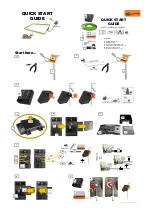
The slam-shut disk is held in the open position (reset
position) by an internal latching mechanism that holds
the valve stem and disk assembly. If the pressure
below the diaphragm increases (or decreases)
reaching the Types VSX2 and VSX8 setpoint, the
diaphragm will travel upwards (or downwards)
operating a lever which in turn releases the valve
stem assembly.
Once released, the spring force on the stem will push
the stem and disk to the closed position against the seat
shutting off all gas flow. The pilot supply pressure is also
shut off when the Type VSX2 or VSX8 is closed. The
manual reset has an internal bypass to equalize the
reset pressure on either side on the slam-shut disk.
In order for the Underpressure Shutoff (UPSO) of
any slam shut to be triggered, the downstream pipe
pressure must drop below the UPSO setpoint. In the
case of a downstream line break, numerous factors
can prevent the downstream pipe pressure from
decreasing below the slam-shut UPSO setpoint. These
factors include the distance of pipe to the break, the
diameter of the pipe, size of the break and the number
of restrictions, such as valves, elbows and bends,
downstream of the regulator and/or slam-shut device.
Due to these factors additional protections should be
installed to stop flow in the event of a line break.
Overpressure Protection
Like most regulators, the Type 299H has outlet
pressure ratings lower than the inlet pressure ratings.
Complete downstream overpressure protection is
needed if the actual inlet pressure exceeds the outlet
pressure rating.
Overpressure protection for internal parts is built
into the main and pilot diaphragms by means of a
small spring on each post. The springs will allow
the diaphragm heads to move farther on the posts
avoiding damage to or bending of the valve trim.
Overpressuring any portion of a regulator or
associated equipment may cause leakage, parts
damage or personal injury due to bursting of
pressure-containing parts or explosion of accumulated
gas. Regulator operation within ratings does not
preclude the possibility of damage from external
sources or from debris in the pipeline. A regulator
should be inspected for damage periodically and after
any overpressure condition.
The pilot vent is provided with a 1/4 NPT tapped
connection in the spring case.
installation
WaRning
!
Personal injury, equipment damage or
leakage due to escaping gas or bursting
of pressure-containing parts might result
if this regulator is overpressured or is
installed where service conditions could
exceed the limits for which the regulator
was designed or where conditions exceed
any ratings of the adjacent piping or
piping connections. To avoid such injury
or damage, provide pressure-relieving
or pressure-limiting devices (as required
by the appropriate code, regulation or
standard) to prevent service conditions
from exceeding those limits.
a regulator may vent some gas to the
atmosphere in hazardous or flammable
gas service. Vented gas might accumulate
and cause personal injury, death or
property damage due to fire or explosion.
Vent a regulator in hazardous gas service
to a remote, safe location away from air
intakes or any hazardous location. Protect
the vent line or stack opening against
condensation or clogging.
if the regulator is exposed to an
overpressure condition, it should be
inspected for any damage that may have
occurred. Operation below these limits
does not preclude the possibility of
damage from external sources or from
debris in the pipeline.
if the Type VSX2 or VSX8 is exposed
to an overpressure condition, it should
be inspected for any damage that may
have occurred. Operation below these
limits does not preclude the possibility
of damage from external sources or from
debris in the pipeline.
in the case of a downstream line break,
numerous factors affect the capability
to evacuate gas from the pipeline.
These factors include the distance of
pipe to the break, the diameter of the
pipe, size of the break and the number
of restrictions, such as valves, elbows
and bends, downstream of the regulator
6
299H Series






































